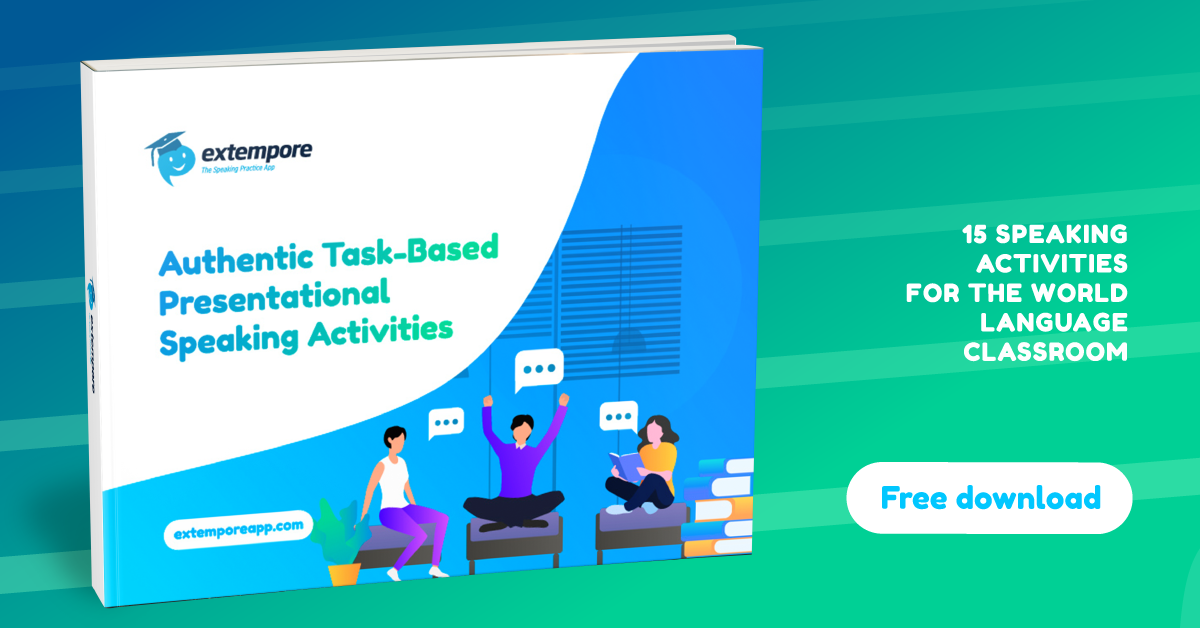
The Overnight Transition to Remote Instruction
The sudden switch to online teaching has dumbfounded many. There is a fact we must acknowledge, designing online courses takes a substantial amount of thought and effort to get it ready. Even the most experienced ones of us—freaked out and wondered how we were going to be capable of adapting a whole course that had been designed for traditional face-to-face teaching into distance mode.
Most probably all of us addressed the same question: “Where should we start now?” It is here that think tanks were organized to brainstorm ideas. The experienced ones helped with advice on what and what not to do and recommended the use of apps and online learning tools that had proven to be useful. It was no time to fool around trying to carry out experiments with online learning. We had to keep it simple, but our lessons had to maintain their quality. Students at all educational levels should be able not to notice drastic changes and should feel that the learning was yet going to be successful.
Creating a Successful Online Learning Environment
There's no question Extempore brings many benefits to the traditional F2F language classroom. In particular, it's been a very effective and convenient way for my students to develop their speaking skills. But over the years, I've discovered that it goes beyond just being a tool for speaking practice. Which, when transitioning to a fully online classroom, has lent itself to be very helpful. The four main benefits Extempore brings to online learning are:

Ongoing Asynchronous Communication
Although many would assert that nothing compares to the value of synchronous exchanges, I would dare lay claim that changing teaching modes only to try stick to traditional “face-to-face” screen encounters only contributes to a greater workload. And not just for the instructor, but for your learners as well. Extempore will perfectly enable you to replace said live encounters by asynchronous communication, and the learning outcomes will be the same—or even better (see our blog on asynchronous language learning). And the reason for this is that the app allows for individual or group communicative tasks of different types (drill, controlled, guided, rehearsed or unrehearsed) to be created, with close monitoring, which oftentimes in the ordinary classroom does not happen. Why? The answer is quite simple: time constraints.
Stress-Free Speaking Practice
After a good number of years teaching world languages now, I have seen students shake with fear every time they had to speak in front of others. There is plenty of research providing empirical evidence regarding the impact certain learner factors such as age, personality traits, input, practice, prior experiences, motivation, among others, have on the acquisition of a second language (Ellis, 1985; Skehan, 1989).
Personality and Prior Experience
Let’s focus on personality and prior experience, first. Shy learners—no matter the age—will tend to have their affective filters high (see our post on the affective filter) and so, will usually refrain from public speaking, especially if previous experiences have been traumatic and, therefore, unsuccessful. More often than not, it is the talkative students that will take the lead and outshine the introverted ones. High affective filter levels represent a barrier that prevents them from performing, let alone learning, successfully. There is no need to have the latter group go through an ordeal when, there are apps now, like Extempore, that will let students practice on a regular basis with ease. In other words, students will have the chance to record themselves as many times as they wish to—assessments settings having been adjusted thusly, and to monitor and self-assess their productions until they finally decide which submission is the most accurate. So, Extempore will indeed assist students in getting out of their comfort zones and in increasing their degree of confidence.
Frequency and Amount of Practice
Now, let's move on to briefly discuss amount of practice. No-one has learned to speak without speaking. No doubt, the opportunities for practicing speaking that we provide our learners with is of central importance. In general, we tend to focus more on developing listening and reading comprehension—as they can be done in whole-class patterns— then writing—as we can check individual production at home—, and finally, speaking, which, again, is usually practiced as a whole class skill. Only on very few occasions do we get to, at least, listen to and assess students in pairs. This is usually done once or twice in a semester, usually in exam situations. But, have we actually created a reasonable number of activities for learners to practice before the assessment? Also, another question flashes into my mind: Are we assessing the process or the product? And, finally, what are the chances that the assessment yields valid and reliable results? Most probably the answer to said question is ‘Probably, not.’ Period. And another question crops up as a result: Have you not ever been faced with students who consequently do way better in written form, but find it extremely difficult to convey even the simplest day-to-day ideas orally? Now, the answer which I can draw from my personal experience, is a big “Yes!”. So, the big question is “Is there a way out?” Again, the answer is a big “Yes!”.
Building Student Motivation and Confidence
Give Extempore a try by creating frequent appropriate activities—with a gradual move from guided, controlled to a combination of rehearsed and unrehearsed conversation—, you are very likely to see that students get engaged in recording themselves and start speaking at ease. It all starts with creating what I like to call “a speaking routine”. In between activity intervals could be related to working on the necessary conversation strategies so that they steer clear of communication breakdowns. And much of this can be done during feedback sessions.
Using Extempore regularly will help you effect a smooth transition in the development of oral skills and, when the time for assessment comes, you will have heard enough of each participant in your class so the assessment will no longer focus on the final product—and students will be content as they will have had enough practice.
To top it all, if tasks are motivating and challenging enough, you will see how many requests for extra practice you get! So, the app will act as an intrinsic motivation and confidence booster: students will feel empowered to accomplish what in class, in front of others, they cannot.
Original Integrative Lessons
Oxford (2001) states that teaching students to improve their learning strategies in a given skill area often leads to a better performance in all language skills. Doubtless, Oxford’s proposal to produce an integrative classroom proves beneficial to the learning process as we get closer to an authentic type of interaction. Needless to say, if we create tasks that, apart from interweave the four macro-skills, encourage learners to develop their critical thinking, we will be providing our students with an invaluable learning opportunity, which will contribute to boosting their confidence for interactions outside the classroom. Some may wonder whether it is possible to transfer these teaching practices to a virtual learning environment. And the answer is a resounding “Yes!”.
The teacher can easily create an assessment consisting of a battery of thought-provoking tasks in a way all four skills become interwoven just like a tapestry. In addition, if we adhere to the approach that highlights that the main aim of second language pedagogy should be “to create creative and critical learners” (Lotfi Gaskaree, Mashhadi, and Dousti, 2010, p. 34), we are, then, left with the responsibility of posing challenging questions that help students use their higher-order thinking skills according to Bloom’s Taxonomy (1956, 2001).

Closely-related to critical thinking is the development of metacognition skills, which caters to a deeper, long-lasting type of learning. And we can also do this through Extempore with adaptable tasks according to the age and level of linguistic competence of each group. What is undeniable is that using the app in such way will leave students with a challenge on the table: that of becoming autonomous to construct their own meaningful knowledge networks and go further in their learning and education by means of authentic real-world experiences with the language. Yet, they will not be alone as the teacher will be behind these tasks, creating and adapting them, and accompanying and monitoring each student’s performance in the winding path of gaining knowledge and developing the so-called communicative competence so that each member of the class becomes an efficient language user.
Quality Personalized Feedback
And, we have reached the last—and most relevant, I would say—Extempore features: timely feedback for each of the students enrolled in your course. Talking from experience, what my students truly value is the possibility of getting individual and very specific comments about their assessments.
Even if we all know that feedback is a compulsory component in our language lessons, we usually do not have the physical time to concentrate on each single learner’s performance. With Extempore, we do have this possibility. And it comes by in a twofold fashion: written or spoken form, with detailed rubrics for students to know what they have done right or wrong. Which channel you decide to use, will probably depend on the area. If it is pronunciation that we want to correct, spoken feedback to model a given sound might be more suitable, for instance. Or not. The example below shows how you can provide feedback to a student after their first experience with Extempore a day after the first pronunciation lesson (specific metalanguage relating to sounds had not been dealt with yet).

And let’s not forget that Extempore acts as a speaking (and writing—if you wish to) portfolio, so students always have the chance to go back and check, and consider what they have done.
A Final Reflection...
Because school is like a second home to many, even if done through a screen, it's important that our students know that we are there and are committed to them. They need to know we are rooting for them, teaching through tasks that keep sparking their interest and curiosity, and that challenge them. Undoubtedly, Extempore is a tool that will help us reach out to them through asynchronous interpersonal communication. If you assign authentic tasks on a regular basis and your feedback is timely and relevant, your learners will probably not notice the change to online mode, as they might be doing more speaking practice than in the ordinary classroom. So, I would just simply advise you to give it a try. You won’t regret it.
Looking for Engaging Task-Based Activities?
Have you checked out our Authentic Task-Based Presentational Speaking Activities eBook? We've put together 15 different engaging activities that can be used with or without Extempore and for all languages!

This is post was created by Cristina Chiusano. Dr. Chiusano is a Department chair at Universiad de Montevideo, Uruguay, an EFL instructor at the Teacher Training Program and Translation Degrees, Unversidad de Montevideo, and a Spanish teacher of online courses at Abiline Chirsitian University. She has a MA in TEFL and Spanish as a Foreign Language as well as a PhD(c) in Linguistics.
References
Ellis, R. (1985). Understanding second language acquisition. Oxford: Oxford University Press.
Lotfi Gaskaree, B., Mashhadi, H. and Dousti, M. (2010). “Using critical thinking activities as tools to integrate language skills”. In Sino-US English Teaching, Volume 7, No.4 (Serial No.76), USA.
Oxford, R. (2001). Integrated skills in the ESL/EFL classroom. ERIC Digest. Washington, DC: ERIC Clearinghouse on Languages and Linguistics.
Skehan, P. (1989). Individual differences in second language learning. London: Edward Arnold.


